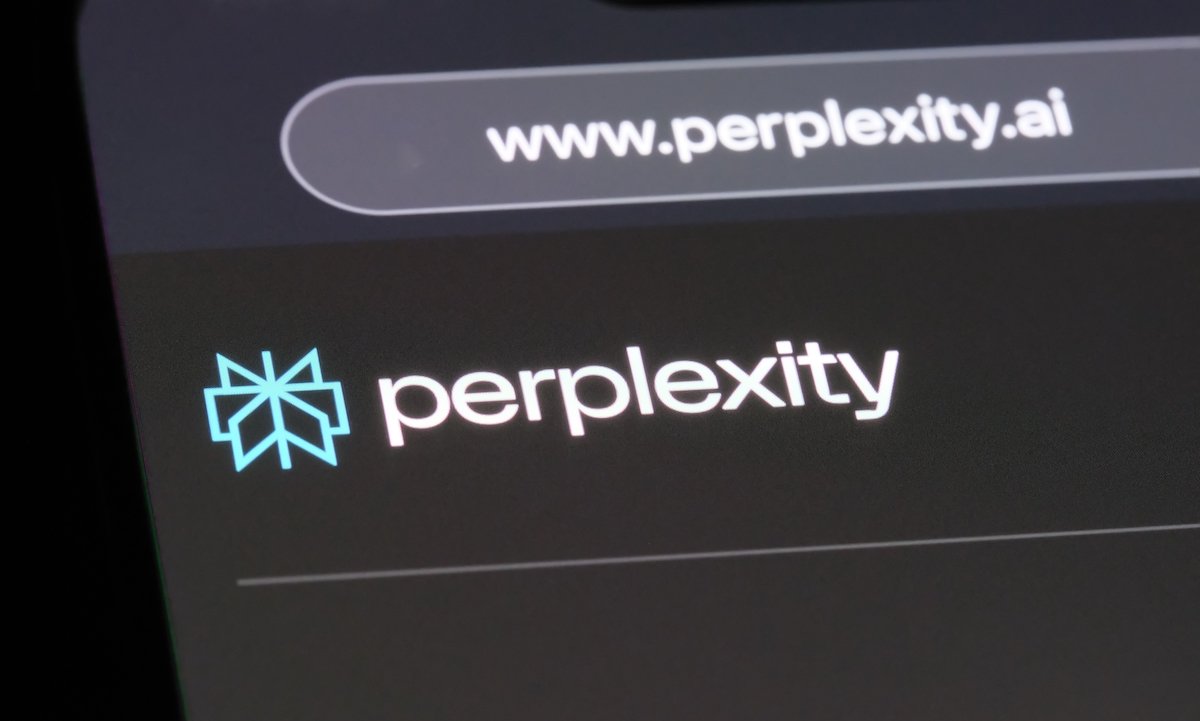AI Insights
Perplexity Valuation Hits $20 Billion Following New Funding Round

Artificial intelligence (AI) search startup Perplexity AI has reportedly secured $200 million in new funding.
AI Insights
Kazakhstan establishes Ministry of Artificial Intelligence to spearhead digital nation transformation

Kazakhstan has announced the creation of a Ministry of Artificial Intelligence (AI) and a systemic shift towards a digital state, set to be realised within the next three years. President Kassym-Jomart Tokayev outlined a comprehensive reform plan, highlighting AI as the central driver for transformation across all sectors, from government administration and industry to agriculture and education.
The initiative includes the integration of a digital tenge into the budgetary system. This is reported by the
official website of Kazakhstan’s president.
A key component of this new development phase is the creation of a Digital Code, designed to standardise regulations surrounding technologies, digital platforms, data, and AI.
The Code will serve as the foundational legal framework for both business and government. The establishment of the Ministry of Artificial Intelligence and Digital Development is an institutional step.
AI integration will encompass all spheres, from the economy and industry to public administration and the social sector. Government services are slated to transition to intelligent platforms, while businesses will be encouraged to adopt digital technologies to enhance productivity and competitiveness.
The initiative includes a social component with the launch of the programme, focused on educating students and schoolchildren in the fundamentals of artificial intelligence. Plans are also in place to introduce AI as a separate subject in school curricula for the first time.
Photo: Myvector /
iStock
AI Insights
2 Popular AI Stocks to Sell Before They Fall 46% and 73%, According to Wall Street Analysts

Popular artificial intelligence (AI) stocks Palantir and Arm may be headed for colossal losses.
Shares of Palantir Technologies (PLTR 4.14%) have returned 2,570% since the artificial intelligence (AI) boom began in earnest in January 2023. Arm Holdings (ARM -2.62%) did not go public until September 2023, but shares have since advanced 195%. Those gains have left both stocks trading at rich valuations, so much so that certain Wall Street analysts recommend selling.
- Rishi Jaluria at RBC Capital has set a target price of $45 per share for Palantir. That implies 73% downside from its current share price of $171.
- Javier Correonero at Morningstar has set a target price of $80 per share for Arm. That implies 46% downside from its current share price of $150.
Here’s what investors should know about these popular AI stocks.
Image source: Getty Images.
Palantir Technologies: 73% implied downside
Palantir introduced its Artificial Intelligence Platform (AIP) in April 2023. It serves as a large language model organization tool that complements its core data analytics platforms by letting developers integrate generative AI into applications and workflows. The product has been an unmitigated success, such that sales growth has accelerated in eight consecutive quarters.
Palantir’s advantage lies in its unique ontology-based software architecture. In this context, an ontology is a framework that integrates an organization’s data, assets, and actions into a digital twin that supports decision-making. It also captures the outcome of every decision and feeds the information back into the models, which creates a feedback loop that leads to better insights over time.
International Data Corp. ranked Palantir as the market leader in decision intelligence platforms last year. That bodes well for the company. Grand View Research estimates that data analytics software sales will increase at 29% annually through 2030. “The main factors propelling the data analytics industry expansion are the growing adoption of machine learning and artificial intelligence,” according to the report.
However, Palantir is one of the most richly valued software stocks in history. It currently trades at 126 times sales, which makes it the most expensive stock in the S&P 500 by a long shot. The second-most expensive stock is Texas Pacific Land at 29 times sales. That means Palantir would still be the most expensive stock in the index even if it lost 75% of its value.
In that context, it is entirely plausible that Palantir will suffer a major meltdown at some point in the future. Prospective investors should avoid the stock or, at the very least, keep any positions very small. Current shareholders with a substantial percentage of their portfolios invested in Palantir should consider trimming their positions.
Arm Holdings: 46% implied downside
Arm has long dominated the market for mobile device processors due to its power-efficient architecture. Its central processing units (CPUs) are found in 99% of smartphones. But that quality, coupled with the flexibility of its licensing model — Arm does not make chips, but rather licenses blueprints to customers who develop custom chips — has also helped it gain market share in data centers.
Major technology companies, such as Alphabet, Amazon, Apple, and Microsoft, have designed Arm-based server processors. And Nvidia‘s Grace Blackwell Superchip pairs two Blackwell GPUs with an Arm-based Grace CPU. In total, Arm has added about 10 percentage points of market share in data centers in the last two years, while Intel has lost about 16 points. AMD has also gained share, which accounts for the difference.
That trend is likely to continue as companies look to curb operating costs associated with AI infrastructure by deploying more power-efficient server processors. CEO Rene Hass recently said AI is “driving unprecedented demand for compute that’s not only performant, but also energy efficient. And Arm is the only compute platform built to deliver.”
However, Arm currently trades at 94 times adjusted earnings. That is particularly expensive for a company whose earnings are forecasted to increase at 23% annually through fiscal 2027. Those figures give Arm a price/earnings-to-growth (PEG) ratio above 4, which is traditionally seen as overvalued. Moreover, Arm trades at 39 times sales, which makes it the third-most expensive stock in the Nasdaq-100, behind Palantir and Strategy.
I doubt Arm shares will decline 46% unless the broader market drops sharply, but the stock is very expensive. Investors should wait for a better entry point before putting money into this semiconductor company. Personally, I would feel more comfortable buying at $120 per share, though the valuation would still be stretched even at that price.
Trevor Jennewine has positions in Amazon, Nvidia, and Palantir Technologies. The Motley Fool has positions in and recommends Advanced Micro Devices, Alphabet, Amazon, Apple, Intel, Microsoft, Nvidia, and Palantir Technologies. The Motley Fool recommends the following options: long January 2026 $395 calls on Microsoft, short January 2026 $405 calls on Microsoft, and short November 2025 $21 puts on Intel. The Motley Fool has a disclosure policy.
AI Insights
2 Artificial Intelligence (AI) Stocks to Buy Before They Soar to $5 Trillion, According to a Wall Street Expert

Philippe Laffont, one of Wall Street’s most successful hedge fund managers, expects Microsoft and Nvidia to be the most valuable companies in the world by 2030.
Billionaire Philippe Laffont runs Coatue Management, a successful hedge fund that nearly tripled the returns in the S&P 500 over the last three years. Coatue curates the Fantastic 40 Growth & Innovation Index, which distills the 150 largest technology companies into a list of 40 stocks best positioned to lead the market in the years ahead.
Microsoft (MSFT 1.82%) and Nvidia (NVDA 0.43%) currently top that list. Coatue expects them to be the largest companies in the world by 2030, with market values approaching $6 trillion, as detailed below:
- Coatue estimates Microsoft will be worth $5.7 trillion in 2030. That implies 54% upside from its current market value of $3.7 trillion.
- Coatue estimates Nvidia will be worth $5.6 trillion in 2030. That implies 30% upside from its current market value of $4.3 trillion.
Importantly, Laffont has put his money where his mouth is. Microsoft and Nvidia are two of the largest positions in his $36 billion portfolio, accounting for over 10% of his invested assets. Here’s what investors should know about these artificial intelligence stocks.
Image source: Getty Images.
1. Microsoft
Microsoft is the largest enterprise software company and the second-largest public cloud provider, and it’s using its strength in those markets to profit from artificial intelligence (AI). Its family of Copilot applications, which automate work across software such as Microsoft 365 and Dynamics 365, surpassed 100 million monthly active users in the most recent quarter.
CEO Satya Nadella says customers are adopting Microsoft 365 Copilot faster than any other product in the business productivity suite. And traction with Copilot is driving the adoption of Copilot Studio, which lets users build AI agents using company-specific data by simply describing the desired functionality in natural language.
In cloud computing, Microsoft recently introduced Azure AI Foundry, a suite of pretrained models and tools that let customers develop, customize, and manage AI applications. “All up, 80% of Fortune 500 companies already use Foundry,” according to Satya Nadella. “We continue to lead the AI infrastructure wave and took share every quarter this year.”
Microsoft reported encouraging fourth-quarter financial results in fiscal 2025, which ended in June. Revenue increased 18% to $76 billion, driven by particularly strong growth in cloud services, where revenue accelerated for the second straight quarter. Commercial bookings growth also accelerated to 37%, hinting at strong future sales growth. And GAAP (generally accepted accounting principles) earnings rose 24% to $3.65 per diluted share.
Wall Street expects Microsoft’s earnings to increase at 12% annually during the next three years. That makes the current valuation of 37 times earnings look expensive, but analysts may be underestimating it. Enterprise software and cloud services spending through 2030 are likely to grow at 12% annually and 20% annually, respectively, according to Grand View Research.
That gives Microsoft a good shot at annual earnings growth in the mid-teens, which makes the stock look a little more attractive and could carry the company to a $5 trillion market value by 2030. Nevertheless, it makes sense to start with a very small position due to the elevated valuation. You can always buy more shares if the stock pulls back.
2. Nvidia
Nvidia dominates the market for data center graphics processing units (GPUs), chips that function as accelerators for demanding workloads such as AI training and inference. The company currently holds more than 80% market share in AI accelerators, and Morgan Stanley analysts think Nvidia will maintain that same level of dominance for years to come, despite intense competition.
Several large customers — Microsoft, Amazon, and Alphabet — have developed custom AI accelerators, called application-specific integrated circuits (ASICs), but they are unlikely to dethrone Nvidia GPUs because they lack ready-made software development tools. In other words, custom chips need custom software tools, and designing those products requires a great deal of technical expertise that most companies lack.
Nvidia introduced its CUDA software platform nearly two decades ago, and it has become an unparalleled ecosystem of code libraries, pretrained models, and frameworks that help developers build applications across use cases such as content generation, computer vision, predictive analytics, and autonomous machines. I/O Fund analyst Beth Kindig says CUDA affords Nvidia an “impenetrable moat.”
Wall Street expects Nvidia’s earnings to increase at 36% annually over the next three years, a sensible estimate, given that AI accelerator sales are forecasted to increase at 36% annually through 2030. That makes Nvidia’s current valuation of 51 times earnings look reasonable. I have no doubt that Nvidia is on its way to a $5 trillion valuation, and I expect the company to hit that milestone well before 2030.
Trevor Jennewine has positions in Amazon and Nvidia. The Motley Fool has positions in and recommends Alphabet, Amazon, Microsoft, and Nvidia. The Motley Fool recommends the following options: long January 2026 $395 calls on Microsoft and short January 2026 $405 calls on Microsoft. The Motley Fool has a disclosure policy.
-

 Business2 weeks ago
Business2 weeks agoThe Guardian view on Trump and the Fed: independence is no substitute for accountability | Editorial
-
Tools & Platforms1 month ago
Building Trust in Military AI Starts with Opening the Black Box – War on the Rocks
-

 Ethics & Policy2 months ago
Ethics & Policy2 months agoSDAIA Supports Saudi Arabia’s Leadership in Shaping Global AI Ethics, Policy, and Research – وكالة الأنباء السعودية
-

 Events & Conferences4 months ago
Events & Conferences4 months agoJourney to 1000 models: Scaling Instagram’s recommendation system
-

 Jobs & Careers3 months ago
Jobs & Careers3 months agoMumbai-based Perplexity Alternative Has 60k+ Users Without Funding
-

 Podcasts & Talks2 months ago
Podcasts & Talks2 months agoHappy 4th of July! 🎆 Made with Veo 3 in Gemini
-

 Education2 months ago
Education2 months agoVEX Robotics launches AI-powered classroom robotics system
-

 Education2 months ago
Education2 months agoMacron says UK and France have duty to tackle illegal migration ‘with humanity, solidarity and firmness’ – UK politics live | Politics
-

 Podcasts & Talks2 months ago
Podcasts & Talks2 months agoOpenAI 🤝 @teamganassi
-

 Funding & Business3 months ago
Funding & Business3 months agoKayak and Expedia race to build AI travel agents that turn social posts into itineraries















